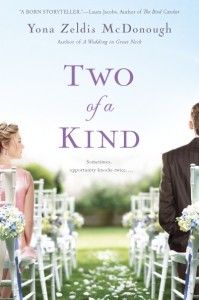Author Archives: Yona Zeldis McDonough
October 15, 2013 by Yona Zeldis McDonough
Who Takes Out the Trash?
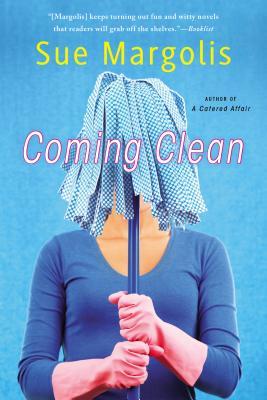 With her bright red hair and snap fire one-liners, British author Sue Margolis is a force. Margolis, who has ten books to her credit and over half a million copies in print, has clearly struck a chord and is in perfect synch with her largely female readership. She delivers funny, brassy comedies that still manage to get at some of the key issues facing women today. In Coming Clean, she tackles the age-old dilemma of who takes out the trash, who does the laundry and who mops the floors—and what it all means.
With her bright red hair and snap fire one-liners, British author Sue Margolis is a force. Margolis, who has ten books to her credit and over half a million copies in print, has clearly struck a chord and is in perfect synch with her largely female readership. She delivers funny, brassy comedies that still manage to get at some of the key issues facing women today. In Coming Clean, she tackles the age-old dilemma of who takes out the trash, who does the laundry and who mops the floors—and what it all means.
On a recent visit to New York City, Margolis sat down with Fiction Editor Yona Zeldis McDonough to chat about her life as a radio reporter and as a ladle-brandishing Jewish grandma, and why Seinfeld tanked in the UK.
YZM: With her dead bubbe Yetta, your character Sophie is clearly Jewish. Are all your protagonists Jewish women?
SM: Not all, but most. That way, I get to do what I enjoy most, writing about crazy Jewish families like the one I came from. It’s the glorious, comical-without-realizing-it matriarchs I remember most of all. I love bringing these elderly Jewish mothers–the ladle-waving yentas who used to breastfeed their children matzo balls–back to life.
YZM: You’ve said that the Jewish content of your books does not go over that well in the UK; can you say more about that?
I think maybe what many Americans don’t appreciate–because they’re so familiar with it–is that their humor is Jewish humor. Seinfeld is the most popular US sitcom ever, so I’m guessing that nearly everybody over there [meaning in the U.S.] ‘got’ it. When the show aired in the UK–late at night–people were baffled and left scratching their heads. Jewish humor has never had the same impact over here as it’s had in the States. In the UK there has always been a strong and well-established tradition of regional (predominantly northern) working class comedy. I think it was hard for Jews to break onto the scene–although some did and became moderately successful. Meanwhile in the US, in the early decades of the last century, Hollywood–not to mention musical theatre–was hungry for producers and writers–many of whom turned out to be young Jewish immigrants who were just as hungry. And so it grew.
YZM: What kind of Jewish upbringing did you have? Is your family observant?
SM: We were vaguely observant until my brother’s bar mitzvah. After that my parents stopped worrying if the silverware got mixed up and pretty soon bacon started to appear in the fridge. My sense of ‘Jewishness’ came much more from Habonim (the Zionist youth group) which I joined when I was about fifteen. It was here that I learned Jewish history, not to mention the Hebrew songs I sang to my children when they were small. Now I sing them to my baby granddaughter.
YZM: You’ve worked as a journalist; how did you get your start as a novelist?
SM: I spent fifteen years working as a freelance reporter for a BBC radio program called Woman’s Hour. It’s been around since the Forties and is a real institution over here. The program manages to be serious and thoughtful – discussing and reporting on issues that concern women in the west and the developing world – but it’s also funny. That’s where I came in. I used to contribute most of the lighthearted features. But I’d always wanted to write–to be funny in print. So in the end I decided to stop talking about it and get on with it. I simply quit the BBC and took the biggest risk of my life. My first novel–Neurotica–was published a year later.
YZM: Your husband is journalist; what is it like being married to a fellow writer?
It’s fine. There’s never any competition. No honestly, there really isn’t. I write novels. He writes for newspapers – mostly about technology. If there’s a problem it’s mainly that our house is always full of boxes. Gadgets for review are constantly being delivered. They disappear eventually, but meanwhile I’m forever tripping over 3D printers or the latest dual docking audio system.
YZM: Which comes first for you: plot or character?
SM: Plot every time. A writer has to have a tale to tell. Story is all.
YZM: Have your novels changed and grown along with you?
SM: Possibly not, but I think they’re about to.
YZM: What’s next on your horizon?
SM: I think what I’ve realized as I get older is that I can’t keep writing convincingly about the lives of thirty-something women. I think it’s a mistake for older authors to keep doing this. You may not realize that you’re losing touch with the younger generation, but you are. Your references are all wrong. You’re not up with the Zeitgeist. So if all goes to plan, I shall be withdrawing gracefully from the world of yummy mummies to concentrate on gorgeous (and very modern) grannies.
- No Comments
September 10, 2013 by Yona Zeldis McDonough
Hystera
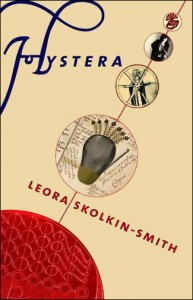 Originally published in 2011 by Fiction Studio Books, Leora Skolkin Smith’s Hystera (winner of the Global E-Books Award and the USA Book Award in Fiction) will be re-released on September 10 by The Story Plant. In this slim but brutal novel, Lillian Weill blames herself for the fatal accident that takes her father away. Tripping through failed love affairs and doomed friendships, all Lilly wants is shelter and peace. She retreats into a world of delusion and lands in a New York City psychiatric hospital; Hystera charts her journey into the darkest hell of self—and back again. Fiction Editor Yona Zeldis McDonough talked with Smith about Patty Hearst, mental illness and the old city of Jerusalem.
Originally published in 2011 by Fiction Studio Books, Leora Skolkin Smith’s Hystera (winner of the Global E-Books Award and the USA Book Award in Fiction) will be re-released on September 10 by The Story Plant. In this slim but brutal novel, Lillian Weill blames herself for the fatal accident that takes her father away. Tripping through failed love affairs and doomed friendships, all Lilly wants is shelter and peace. She retreats into a world of delusion and lands in a New York City psychiatric hospital; Hystera charts her journey into the darkest hell of self—and back again. Fiction Editor Yona Zeldis McDonough talked with Smith about Patty Hearst, mental illness and the old city of Jerusalem.
Yona Zeldis McDonough: This is an unflinching portrait of mental illness; what drew you to the subject?
Leora Skolkin Smith: I was drawn to writing about mental illness by the popular medical and cultural presentations of it. I felt that the continual oversimplifications in the media threw more darkness than light onto this disturbing and beguiling state of human behavior and ultimately silenced the cries from those in the throes of it. In recent years, the use of drugs such Prozac have been described in memoirs and accounts of depression but I felt this was only a partial, inadequate answer. I wanted a deeper exploration, one that was not based on easy resolution or being “fixed,” but instead engages philosophical and sexual questions of existence itself, as well as questions about identity and intimacy that transcend our purely medical and limited understanding. I wanted to show that mental illness is part of a continuum of human experience throughout history.
- No Comments
September 3, 2013 by Yona Zeldis McDonough
In the Courtyard of the Kabbalist
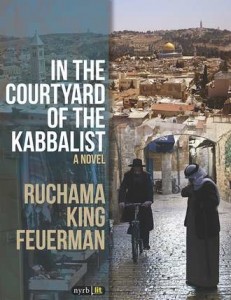
Born in Nashville, TN and raised in Virginia, Ruchama King Feuerman bought herself a one-way ticket to Jerusalem when she was seventeen to study Kabbalah with mystics. She went to college in Israel and returned to the United States to get her MFA at Brooklyn College. The stories she wrote there became Seven Blessings, her acclaimed first novel about matchmaking from St. Martin’s Press; Kirkus Reviews called her, “The Jewish Jane Austen.” Today she lives in New Jersey with her husband and children where, among other things, she runs writing workshops for Orthodox and Hassidic women; she talked to Fiction Editor Yona Zeldis McDonough about the lure of the Talmud, the people she met in Israel and her abiding belief in the power of the story.
Yona Zeldis McDonough: Tell me about the time you spent in Jerusalem.
Ruchama King Feuerman: The ten years I lived in Israel – nine of them in Jerusalem – I fell in love with Torah study. Chumash, midrash, philosophy, Maimonides, law, the works. I loved the act of throwing myself at the text, beating my brains to figure out what Jewish thinkers had thought centuries ago, touching their minds. This was in the eighties when a whole revolution was taking place in Orthodox women’s Torah study. I tutored and taught at Brovender’s, perhaps the first school to teach women Gemara. After six or seven years, though, I started to feel like a walking brain. I found myself craving a more Hassidic type of learning. I met kabbalists, I prayed with the Hassidim, and I studied the Hassidus of Breslev, Chabad, Chernobyl, whatever I stumbled upon. I loved how if there was a great rabbi or rebbetzin you wanted to talk to, you could just get on a bus and go meet them. I loved the many wise and powerful Jewish women I met there with their artistic head scarves. Jerusalem seems to breed them. Three decades later, I can’t stop writing about Jerusalem, the personalities I met there.
- No Comments
August 7, 2013 by Yona Zeldis McDonough
Marked Woman
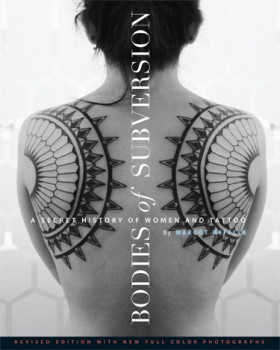 Jews have had a heinous association with tattoos: millions were marked, against their will, as they filed through the gates of concentration camps that dotted Europe like the spores of a horrific and malignant disease. Even after the survivors were liberated, the incised blue numbers remained, silent yet eloquent witnesses to the systematic process of dehumanization of which they were only a part.
Jews have had a heinous association with tattoos: millions were marked, against their will, as they filed through the gates of concentration camps that dotted Europe like the spores of a horrific and malignant disease. Even after the survivors were liberated, the incised blue numbers remained, silent yet eloquent witnesses to the systematic process of dehumanization of which they were only a part.
Fast forward to Margot Mifflin’s recently reissued Bodies of Subversion: A Secret History of Women and Tattoos, a brilliant and compulsively readable volume that offers an alternative range of meanings: tattoo as a symbol of empowerment, of catharsis, or as a way of establishing new boundaries for the female body. And one of the featured subjects, Marina Vainshtein, will no doubt cause to you reexamine any ideas you might have had on the topic of Jews and tattoos.
Vainshtein, who these days goes by the name of Spike, was born in the Soviet Union and came to the United States when she was four. She was raised in California, and in the early 1990s, when she was eighteen, began having explicit Holocaust imagery tattooed on her skin. Now, more than twenty years later, she is covered. Mifflin lists these tattoos in some detail: a smoke-belching crematorium, naked bodies hanging from gallows, an old woman chained to a coffin of nails, an escaped inmate dying on a electrified fence, a can of Zyklon B, (used in gas chambers), a skeleton in an open casket reading Kaddish, a star of David, and, in Hebrew, the words, Earth hide not my blood (from the book of Job) andNever Forget. Using her body as both her sounding board and her canvas, Vainshtein has totally subverted both the imagery and the process: her tattoos are chosen and worn with pride, not shame, and they delineate aspects of her heritage in a graphic, unmistakable way—she is the granddaughter of survivors. When questioned about her unusual choice, Mifflin quotes Vainshtein as saying, “Why not have external scars to represent the internal scars?” Mifflin posits that even those born long after the Holocaust still suffer psychic damage—and pain. I had a chance to communicate with Vainshtein via e-mail and here is what she shared with me:
My first tattoo was a MAGEN DAVID on the inside of my left arm. After that was a piece called ADAGIO on my right arm. Adagio is a man playing the violin and represents the orchestra that was placed at the gates of Auschwitz to fool the herd of incoming prisoners into thinking that it was a resort rather than a death camp.
At this point almost 90% of my body is covered in holocaust memorial tattoos; this includes a portrait of my grandparents who survived the pogroms in the Ukraine.
Reaction to my work has spanned the gamut from complimentary/fascination to utter disgust. But what I’ve done over the 22 years has mainly been a tool to educate and shed light on a horrific time in history. Many kids barely skim over WWII these days and some have no idea of the atrocities that occurred. And even still history repeats itself and the barbaric treatment of people continues, i.e. the Armenian holocaust, Sierra Leone, ethnic cleansing in Bosnia, Serbia, Africa etc.
All the artists who have worked on me (12 in total) have either been my friends or have become friends.
Yona Zeldis McDonough is Lilith’s fiction editor.
- No Comments
July 31, 2013 by Yona Zeldis McDonough
Two of a Kind
In her fifth novel, Two of a Kind, Lilith’s Fiction Editor Yona Zeldis McDonough tackles the still-thorny subject of intermarriage. Christina Connelly, Catholic by birth, falls in love with Dr. Andy Stern, who is Jewish. Among the many impediments to their ultimate happiness is Andy’s mother, Ida, a Holocaust survivor. Below is an excerpt:
The streets of this unfamiliar neighborhood on the warm, late spring were lovely: brownstone and limestone houses side by side, mature trees, flowers in urns, window boxes and planters. In another mood, Ida would have stopped to linger but today she had a mission. An urgent mission. It was the unborn baby. The baby that belonged to her son and that this Christina person might actually abort. For Ida, the loss of this baby would be a fresh sorrow heaped upon so many past sorrows. She didn’t think her old heart could stand it.
There had been another lost baby, decades ago, fathered by Jurgi, the boy who lived across the road. He’d been her best friend for years, like a brother, until they’d been hurriedly married and practically shoved into a room alone together after the wedding. “Do you know what we’re supposed to do?” he had whispered, suspecting, correctly as it turned out, that their parents were listening anxiously at the door.
“Not really,” she had answered, knowing she should be more nervous than she was, but this was Jurgi and how could she be nervous with Jurgi? They did not figure out what they were supposed to do that night, or the night after that. But on the third night, he came into the room at Ida’s house that they were now told was theirs looking very serious. “I understand now,” he said to her. “My father explained it all to me.”
- No Comments
May 20, 2013 by Yona Zeldis McDonough
The Gifts that Mattered
 Though Mother’s Day 2013 may be a wrap, it’s not too late to gift your maternal unit with a copy of What My Mother Gave Me: Thirty One Women On The Gifts That Mattered Most (Algonquin). This rich collection of essays (as studded with delectable morsels as my own mother’s walnut-raisin-cinnamon- sugar-dusted-cookies) offers a preponderance of Jewish women ruminating on gifts both tangible and not:
Though Mother’s Day 2013 may be a wrap, it’s not too late to gift your maternal unit with a copy of What My Mother Gave Me: Thirty One Women On The Gifts That Mattered Most (Algonquin). This rich collection of essays (as studded with delectable morsels as my own mother’s walnut-raisin-cinnamon- sugar-dusted-cookies) offers a preponderance of Jewish women ruminating on gifts both tangible and not:
She saw me hesitating over a very expensive lace Mexican blouse, picking it up, putting it down, walking away, coming back. It cost what seemed like the earth to me—maybe fifty dollars. “Do you like it darling?” my mother asked. “It’s gorgeous,” I said…“But it’s so expensive.” “You should always get the things you really want,” she said, and she picked it up, marched to the cash register, and bought it.
–Katha Pollit, The Unicorn Princess
In the midst of all the joy were the flowers Mom bought me. They’d made the service feel transcendent. They’d made the lunch exuberant and elegant at the same time. She gave me more in those gusts of color and vegetation than I could have even imagined…Thank you for the roses, Mommy.
–Abigail Pogrebin, Never Too Late
…then came the plant she gave me when my first son was being born…I took out the worst of my postpartum derangement syndrome on that poor plant…Eight and a half years later, the plant still blooms in an upstairs dormer window…Even with its perilous beginnings, that plant is the most precious thing my mother has ever given me. Most of what I know about parenting and patience I’ve learned by watching it.
–Dahlia Lithwick, The Plant Whisperer
I still have my mother’s jade necklace, and I every time I touch it and every time I put it on, I think of her and I still miss her. I don’t think missing a mother ever stops. I have decided to be buried with it.
–Marge Piercy, Betrayal
- 1 Comment
April 8, 2013 by Yona Zeldis McDonough
A Bona Fide Medium
 Rochelle Jewell Shapiro is a psychic, novelist, essayist and poet. In her latest novel, Kaylee’s Ghost, she continues the saga of Miriam, a character she introduced in her first book, Miriam the Medium. Shapiro tells Yona Zeldis McDonough about how she first became aware of her unusual gifts, the distinctions between psychics and mediums, and Joseph, arguably the greatest Jewish psychic of all time.
Rochelle Jewell Shapiro is a psychic, novelist, essayist and poet. In her latest novel, Kaylee’s Ghost, she continues the saga of Miriam, a character she introduced in her first book, Miriam the Medium. Shapiro tells Yona Zeldis McDonough about how she first became aware of her unusual gifts, the distinctions between psychics and mediums, and Joseph, arguably the greatest Jewish psychic of all time.
So you’re a bone fide medium! Say more about your work.
A medium focuses on seeing the spirits of the dead. I’m more of a “nuts and bolts” psychic. I see a client’s relationships, finances, work life, health concerns, etc. But of course, the spirits are always around. As a psychic, I see in symbols. I get mental images such as the scales of justice signifying either that the client is a lawyer or in the midst of a lawsuit. I see pink flowers for a birthday, red for an anniversary, a couple of Silly Putty eggs for breast implants, etc. It’s like walking around with a unique tarot deck in my head. Each reading is as individual as a thumbprint, as unique as the client himself, which keeps me thrilled with my work.
When did you first discover you had psychic gifts?
There was not one specific moment when I first discovered that I had a gift. As a child, I didn’t know that people couldn’t see people’s auras or get glimpses of what they were doing when they weren’t physically around them. I didn’t know that I was seeing spirits when I saw the transparent forms, the people-shaped shadows. I didn’t know that words that slingshot from my mouth could be other people’s darkest secrets. I had to learn the hard way—A frassk in the pisk, a slap on my big mouth from my mother. It took me a long time to realize on my own how hurtful my unasked-for insights could be. At eleven years old, walking down the aisle of a beach club—anyone remember Roche’s Beach Club in Far Rockaway?—I blurted out, “Mrs. Berger takes Valium and drinks scotch.” I didn’t even know what Valium was. My grandfather had schnapps, not scotch. One of Mrs. Berger’s friends was changing inside one of the wooden lockers and heard me. I was banned from the Bergers’ house. After that, not many other mothers wanted me around either. I was forced to apologize to Mrs. Berger, tell everyone I made it up, even though I felt in my gut that it was true.
- 5 Comments
March 1, 2013 by Yona Zeldis McDonough
A Conversation With Maryann MacDonald
My name is Odette.
I live in Paris,
on a cobblestone square
With a splashing fountain and a silent statue.
My hair is curly.
Mama ties ribbons in it.
Papa reads to me and buys me toys.
I have everything I could wish for,
except a cat.
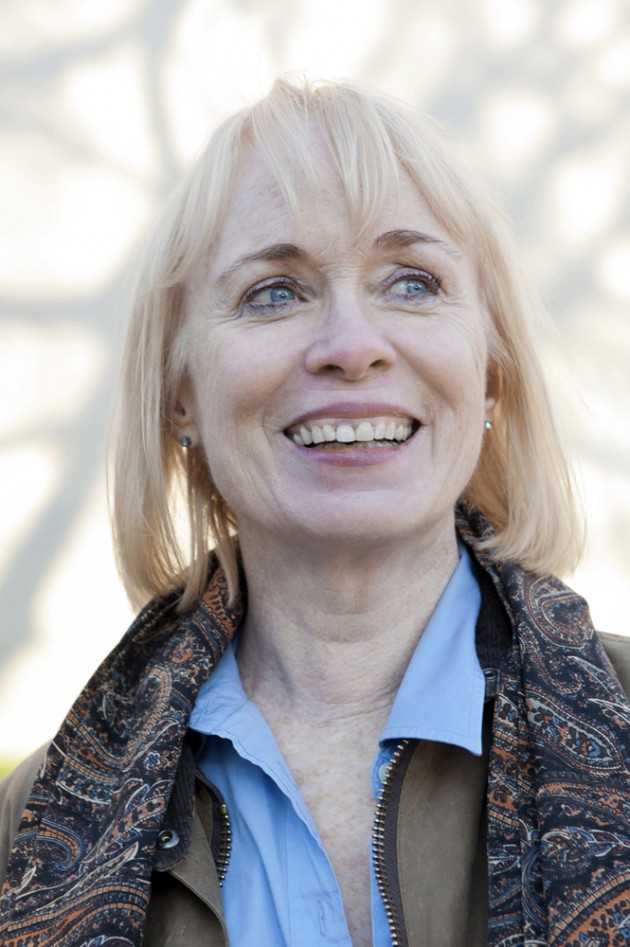
Photo credit: Stefan Falke
So begins Odette’s Secret (Bloomsbury 2013), a lyrical and haunting tale that was drawn from an actual story and reimagined by children’s book writer Maryann MacDonald. Lilith fiction editor Yona Zeldis McDonough talked to MacDonald about inspiration, Francophilia and the salvation offered by poetry.
Tell me, what inspired you to write this book?
One late August afternoon a few years ago, I was walking around the old Jewish neighborhood of the Marais in Paris with my husband. We passed an elementary school with a bronze plaque. The plaque honored the memory of the Jewish children, students at the school, who had been deported from France during WWII. I kept thinking about those children…who were they? What were their lives like in France during the war?
I began reading about life in Paris during World War II, especially about the life of French Jews. I learned that 11,400 children were deported. Most of these died. But more children survived in France than in any other European country. They were hidden in homes, convents, monasteries, farms and schools all over the country. To stay successfully hidden, these children had to “reinvent” themselves, to become Christian children. How had they been able to do this? And what was it like for them to readjust to reality after the war?
While I was at the American Library in Paris…by chance, I found Doors to Madame Marie, the autobiography of Odette Meyers, a woman who had been one of those hidden French children during the war.
I became fascinated by Odette’s story, and one night I shared it with my husband. Together we went to the 11th Arrondissement, to stand in front of the building where Odette had lived. “I so wish we could go inside!” I said, looking at the heavy oak door at the front of the building, a solid street door of the type that is always locked.
- 2 Comments
February 7, 2013 by Yona Zeldis McDonough
A Conversation with Racelle Rosett
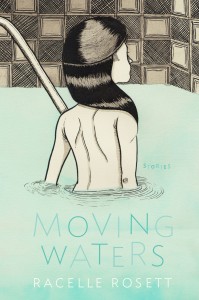 Your stories all center on a group of Reform Jewish community in Hollywood; is this a community you know well from personal experience?
Your stories all center on a group of Reform Jewish community in Hollywood; is this a community you know well from personal experience?
The temple my kids grew up in is nicknamed “Temple Beth Showrunner” because the creators of so many television shows attend. But when you sit in the sanctuary year after year you see that loss is loss. That’s what interested me – that in LA where are lives are so disparate, the temple remained a destination of healing and connection.
There is a moment as an adult when you suddenly deeply understand Shehechianu. When you realize how extraordinary a blessing it is to arrive, sustained at this moment. You are keenly aware of the loved ones who did not arrive with you. You make this journey with your community – it would be unbearable without it.
Jewishly, Los Angeles has an incredibly dynamic scene right now there seems to be a real desire to connect and also a vigorous mission of social action. Sharon Brous an LA rabbi was named one of the most influential rabbis in the country. East Side Jews is an organization that creates gleefully irreverent but deeply spiritual gathering for young Jewish people outside of temple. It’s exciting to see how our Jewish lives inform our daily lives – how relevant and useful these rituals are – even now, even in LA.
Do you feel there is a distinct difference between Jews in say, Los Angeles, and Jews in New York City?
Well, I had Zabar’s flown in for my son’s briss. In LA on Simchat Torah they serve sushi to commemorate the scroll. But lox is lox! I think we are less different than we are the same. We are the same in the ways that most matter. Allegra Goodman’s collection Total Immersion is set in Hawaii, but I think that is the same delight of stepping into a temple in a different country or a different community. If you wait a few moments the Shma will be said and you’ll know who you are.
- 2 Comments
July 18, 2012 by Yona Zeldis McDonough
A Conversation With Sally Koslow
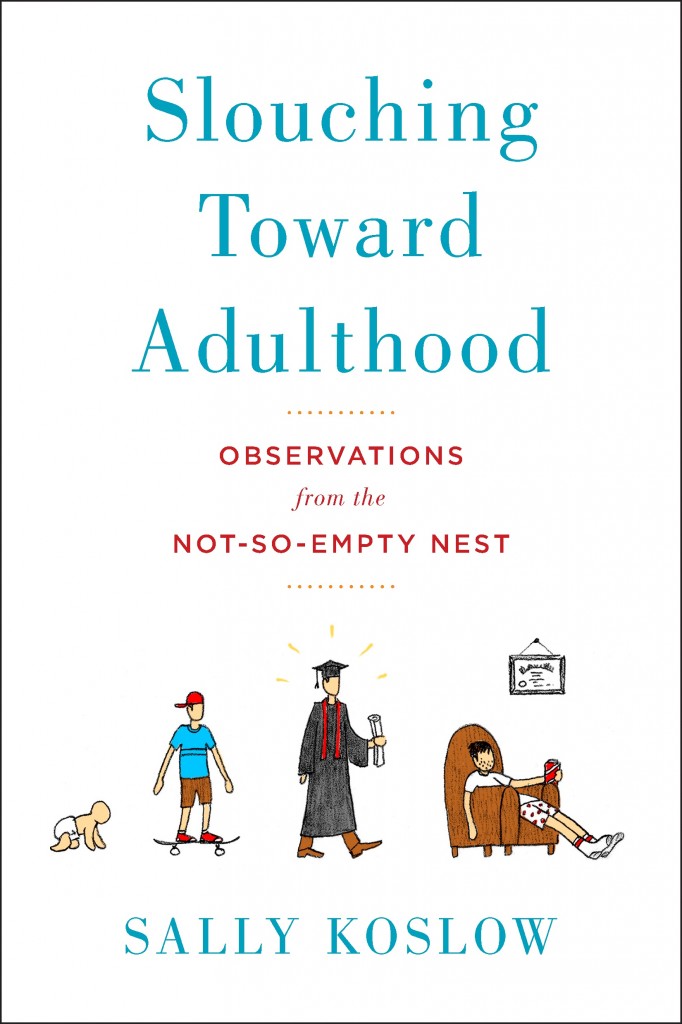 In addition to being the author of three novels and the former editor-in-chief of McCall’s Magazine, Sally Koslow has earned her chops as a crackerjack reporter. In her newest book, Slouching Toward Adulthood: Observations from the Not-So-Empty Nest, she draws on that background and comes up with a penetrating analysis of today’s boomer parents and their frequently failed-to-launch offspring. She talked to Fiction Editor Yona Zeldis McDonough about the need to establish boundaries, the Jewish tradition of über-parenting and how 34 has become the new 24 for a whole generation of young people.
In addition to being the author of three novels and the former editor-in-chief of McCall’s Magazine, Sally Koslow has earned her chops as a crackerjack reporter. In her newest book, Slouching Toward Adulthood: Observations from the Not-So-Empty Nest, she draws on that background and comes up with a penetrating analysis of today’s boomer parents and their frequently failed-to-launch offspring. She talked to Fiction Editor Yona Zeldis McDonough about the need to establish boundaries, the Jewish tradition of über-parenting and how 34 has become the new 24 for a whole generation of young people.
How did the idea for this book come about?
Eleven years ago my oldest son moved from New York City to San Francisco after college graduation and two years later returned to Manhattan to start a new job. The plan was for him to live with us until he found his own apartment. When 9/11 happened a week later, however, his new job evaporated. He began collecting unemployment and seemed in no hurry to job-hunt. After ten months, my husband and I found out that our son had, in fact, been offered a job that he was thinking of declining—it wasn’t, in his eyes, perfect. After receiving a significant shove, he accepted the offer and moved to an apartment in Brooklyn with members of a band called, fittingly, The Oddjobs. Cut to three years ago. Having a young adult child return to the womb became something I noticed all around me. I also observed growing numbers of college grads in a state of constant improvisation, often shackled to their parents by cell phone and/or purse strings in a three-legged raise toward an undecided destination. Since I myself had been 24, or even 34, something new and interesting was clearly afoot. As a journalist, I decided to explore it and my research become Slouching Toward Adulthood: Observations from the Not-So-Empty Nest.
- 4 Comments
 Please wait...
Please wait...
